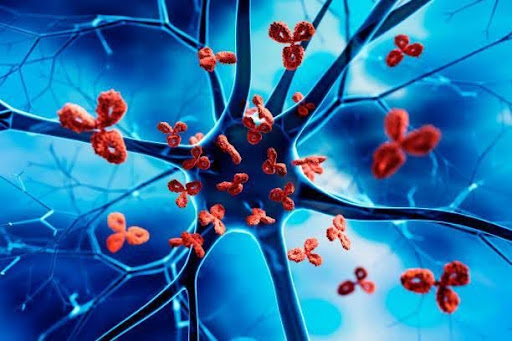It can be tough to manage autoimmune diseases. They happen because your immune system attacks the body itself, causing inflammation, pain, and damage to the organs and systems. For many individuals with autoimmune diseases, corticosteroids are necessary to help reduce symptoms and prevent worse flare-ups.

Learning about corticosteroids and how they work will help you understand their purpose in these conditions, making you more empowered and confident in your health journey.
What Are Corticosteroids?
Corticosteroids are medications that closely mimic cortisol, a hormone your body makes in your adrenal glands. They are used to reduce inflammation and to suppress the overactive immune response. As an overreaction of the immune system characterises many autoimmune diseases, corticosteroids are central to calming down the body’s defences and minimising the damage.
✅ Read Also: Sinusitis problem and Treatment | চাইনাচাইটিচৰ সমস্যা আৰু প্ৰতিকাৰ
One such steroid that is prescribed widely is wysolone Tablet, which contains Prednisolone, used in several autoimmune diseases ,including:
- Rheumatoid arthritis
- SLE (Systemic lupus erythematosus)
- Ulcerative colitis
- Psoriasis
- Multiple sclerosis
- Autoimmune hepatitis
- Vasculitis
- Myasthenia gravis
Similar to other naturally present or synthetic corticosteroids, Wysolone tablet helps reducing swelling, redness, allergic reactions and overactive immune response.
Corticosteroids: What They Do For Autoimmune Diseases
Corticosteroids exert strong anti-inflammatory and immunosuppressive effects. In disorders such as autoimmune diseases, the immune system is confused and starts attacking healthy tissues. This results in inflammation, joint or organ damage, and serious symptoms.
Corticosteroids help by:
- Anti-inflammatory effect: They decrease the inflammatory chemicals leading to reduced swelling, heat, and pain.
- Inhibiting the immune response: They reduce the amount of immune activity to limit damage.
- Fast relief of symptoms: Corticosteroids act very fast, and they can clear up flare-ups quickly.
During the acute phases of autoimmune diseases, when symptoms are at a peak stage, these can be especially helpful.
Forms and Dosage
Types of corticosteroids
- Tablets or liquids that you take by mouth
- Topical creams or ointments (for skin conditions such as lupus or psoriasis)
- Infusions or IV drips (these are used during major flares in hospitals)
- Inhalers (for autoimmune respiratory disease)
The dosage will vary according to the seriousness of the condition, the type of disease involved, and the response by the patient. Your physician might begin at a high dose and taper down, or lower the dose gradually over time, to prevent withdrawal symptoms and a return of flares.
✅ Read Also: Menopausal Symptoms and Treatment
Why Should You Take Corticosteroids as Directed
Taking corticosteroids correctly is important. If you suddenly stop or miss a few doses, a lot may happen to your body. You also expose yourself to a risk of symptom rebound or flare of disease. Here is the reason why you need to follow the medical instructions strictly:
- These medications can suddenly trigger fatigue, weakness, joint pain, but also life-threatening adrenal crisis.
- Excessive use can lead to complications such as high blood pressure, weight gain, or diabetes, the team warned.
- Do not change your dose or stop treatment without first discussing it with your doctor.
Duration of Treatment with Corticosteroids
Corticosteroid treatment is used over a period of time. They are sometimes used for a short period of time to control a flare. In others, particularly in very chronic and severe autoimmune diseases, a longer course is needed. To minimise side effects to users, doctors use the lowest effective dose for the least time.
Your doctor may also add corticosteroids to other long-term disease-modifying medications (such as methotrexate or biologics) to better control the disease.
✅ Read Also: Why Headaches Occur during Menstruation? Causes, Symptoms and Home Remedies
Most Frequently Experienced Side Effects and Their Management
Corticosteroids have side effects like all medications, especially if taken for long periods or high doses. Common side effects include:
- Increased appetite and weight gain
- Fluid retention
- High blood pressure
- Changes in mood or sleep problems
- Bone density loss (osteoporosis)
- Elevated blood sugar
It can also lead to a higher likelihood of infections, eye problems (such as cataracts), and delayed recovery from cuts and scrapes.
To reduce these risks:
- Take your dose in the morning to mimic the natural rhythm of cortisol levels in your body.
- Have a healthy low-sodium diet but high in calcium
- Get regular exercise to keep those bones strong and your weight in check.
- Regular health check-ups of blood pressure, sugar and bone density.
- Calcium & Vitamin D Supplements: Follow-ups as per the recommendation of the doctor, use calcium and vitamin D supplements.
Monitoring and Follow-Up
It requires careful monitoring during corticosteroid therapy. As part of routine follow-up, your physician is likely to carry out blood checks, monitor your weight and blood pressure, and ask about symptoms. These doses can be adjusted according to your control of the disease and whether you experience side effects.
They also may give you vaccines or medicines you can take to prevent an infection because you might not be able to fight a disease well while you’re getting corticosteroid treatment.
When to Contact Your Doctor
Patients taking corticosteroids should alert their doctor promptly if they have:
- Presence of fever without an explanation or any sign of infection
- Sudden vision changes
- Radical fluctuations in mood (e.g., mental health changes)
- Muscle weakness or pain
- Stomach ache or blood in stool
- Do not ignore symptoms that are new or have worsened.
Note: Remember that corticosteroids are not a cure for autoimmune diseases. Instead, they aid in both controlling the symptoms and avoiding complications. Autoimmune diseases are treated with long-term approaches that often involve lifestyle changes, close monitoring from a doctor, and sometimes additional treatments other than corticosteroids.
Corticosteroids can provide people with rapid relief from joint pain, swelling, skin rashes, and fatigue; patients who do respond often feel relief within hours or days, which can really improve daily function and quality of life.
✅ Read Also: The Hidden Clauses: What Your Health Insurance Policy Isn’t Telling You
Takeaway
Wysolone Tablet is a corticosteroid that helps reduce inflammation, manage an overactive immune system, and control flare-ups. When used appropriately, it can also protect organs, lessen pain, and enhance quality of life.
Nonetheless, they should be used judiciously and monitored closely due to the possibility of side effects. Take corticosteroids as directed, attend regular follow-ups and let your team know if you have any concerns.
Often, your doctor will recommend other medications or supplements to spare your body from the long-term effects of inflammation or being on corticosteroids. For example, while daily without being on a steroid for over three months will be key to supporting bone health, supplements containing Elemental Calcium are recommended for osteoporosis prophylaxis during long-term steroid treatment.
Corticosteroids can make it possible for you to live a more tolerable, healthier life if you know how to use them, my friend, and how to use them wisely.

Hi, I’m Dev Kirtonia, Founder & CEO of Dev Library. A website that provides all SCERT, NCERT 3 to 12, and BA, B.com, B.Sc, and Computer Science with Post Graduate Notes & Suggestions, Novel, eBooks, Biography, Quotes, Study Materials, and more.








